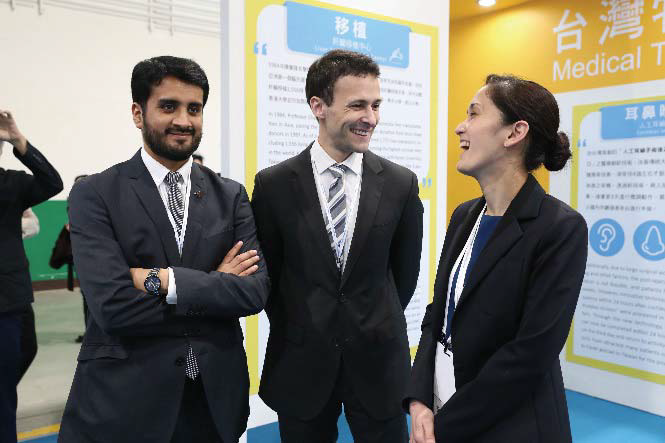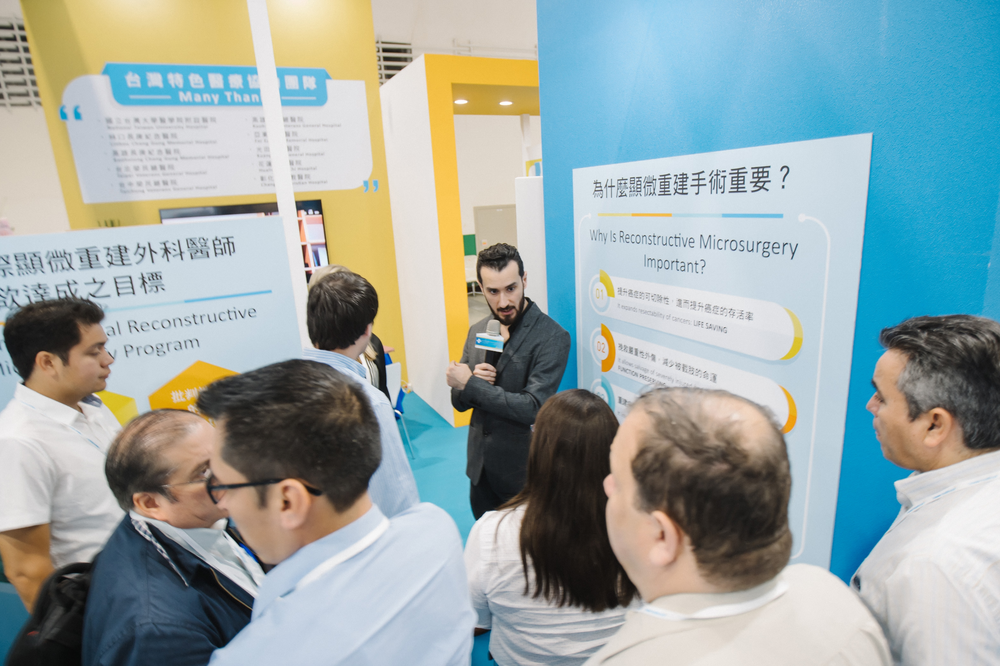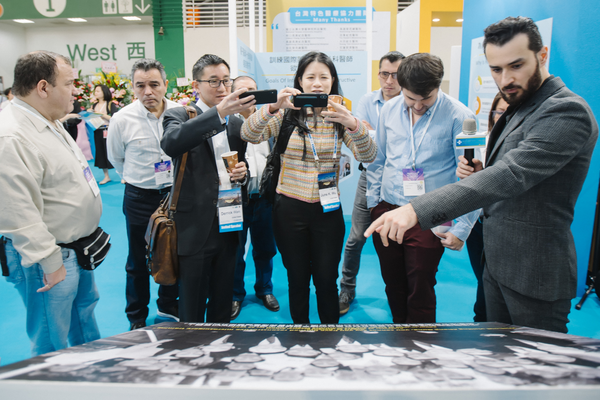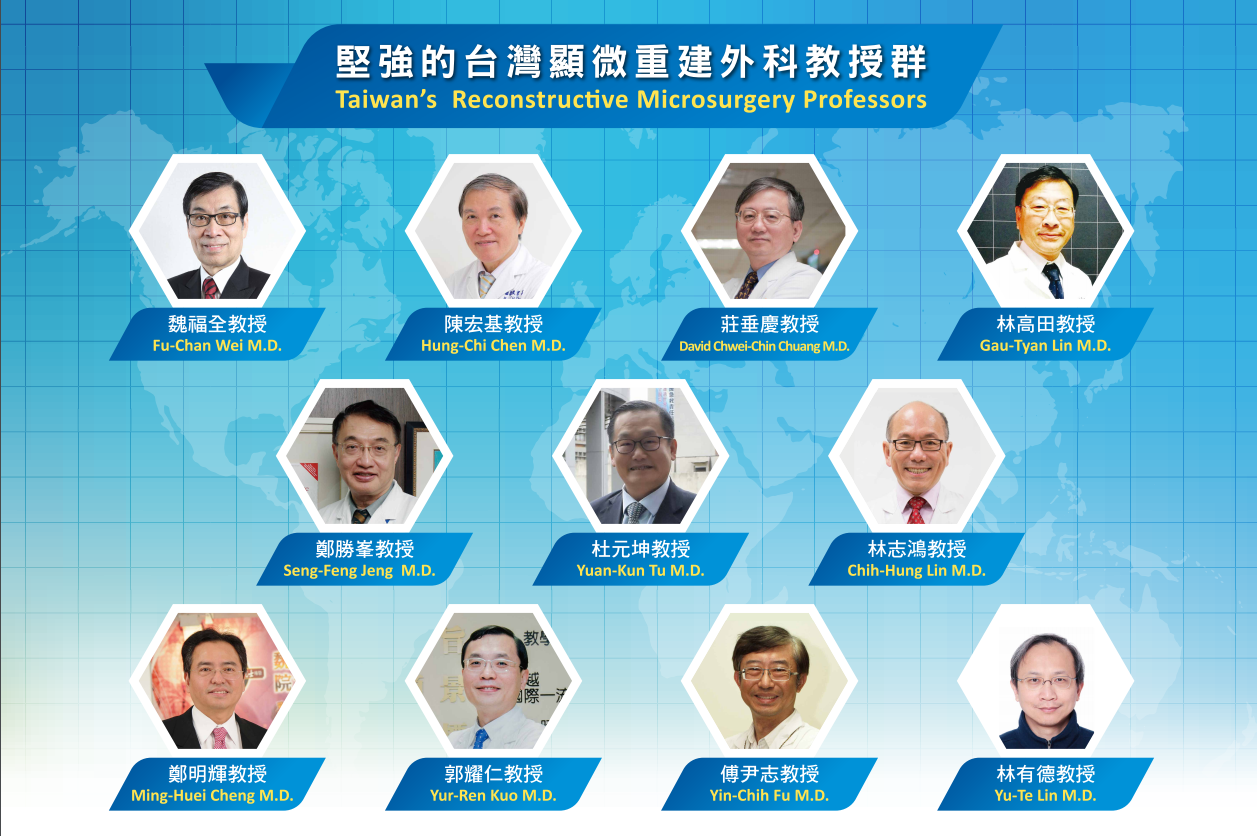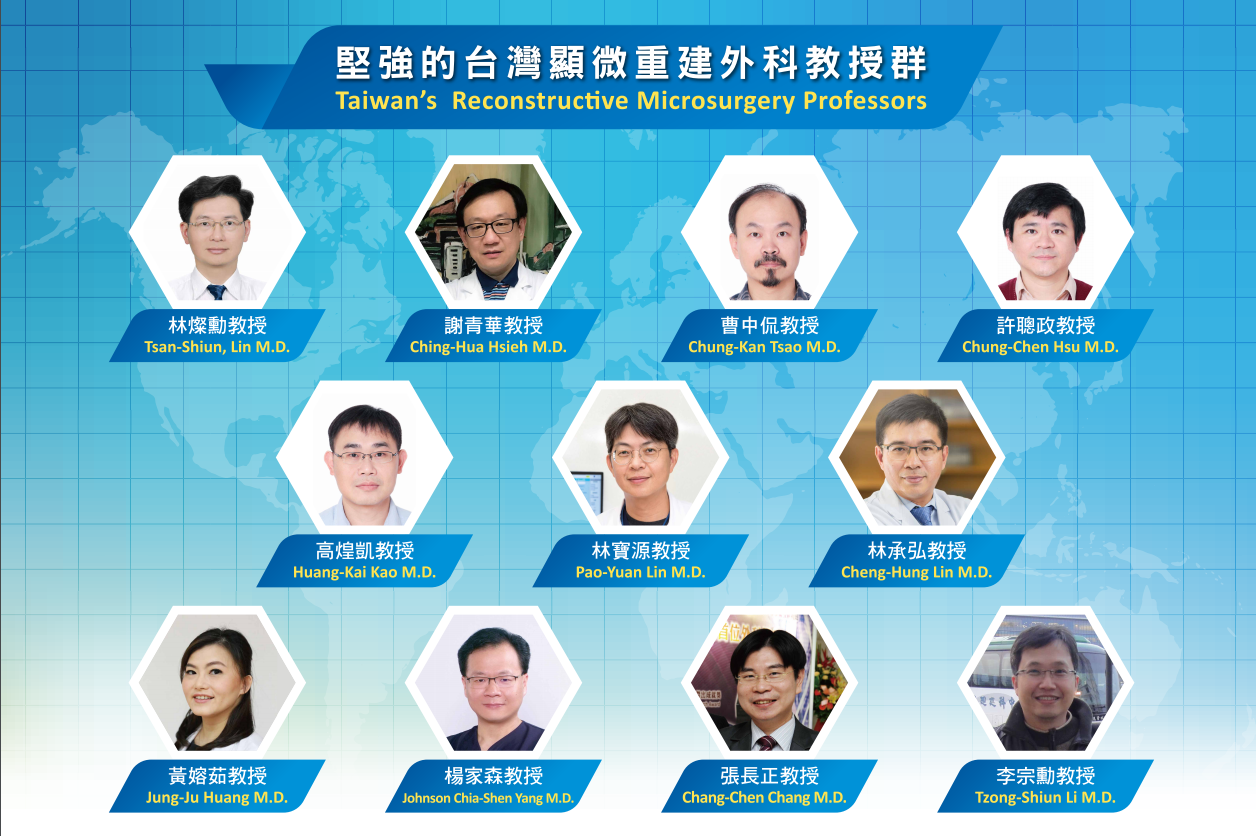
2018 Taiwan International Medical Pavilion
2018-12-13
2018 Taiwan International Medical Pavilion
One of the highlights of the expo is the Taiwan International Medical Pavilion of the MOHW that showcases the highly specialized surgical field of reconstructive microsurgery. Since 1990, Taiwan has built a reputation worldwide in the field of reconstructive microsurgery. Because of its health insurance policy and surgical prowess, Taiwan has seen several notable cases. Taiwan has also produced high-quality publications and research that can be seen all over the world. Taiwan holds an open attitude when it comes to the field of reconstructive microsurgery as it actively interacts with the international community. This year's Taiwan International Medical Pavilion leveraged the prominent reputation that Taiwan's reconstructive microsurgery holds in the international medical community to introduce Taiwan as a major international surgeon training center and its specialty medical service.

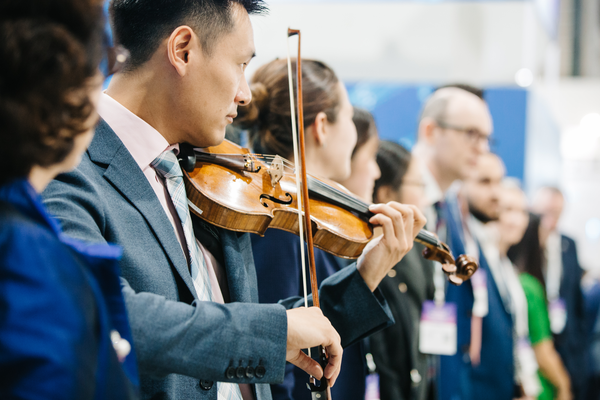

During the Expo, international VIPs were invited to join the opening press conference and other activities at the Pavilion. Among those invited include Dr. Renato Saltz (President of The International Society of Aesthetic Plastic Surgery), Dr. David Chiu (Founder of World Association for Plastic Surgeons of Chinese Descent ), Dr. Leonid Eidelman (President of World Medical Association) and Dr. Otmar Kloiber (Secretary General of World Medical Association), as well as international delegations including the Association of Thai Private Hospitals, Singapore's healthcare group, a delegation of Indonesian hospitals, an Israeli healthcare delegation, and the American College of Physicians.
Taiwan as a major international surgeon training center
Taiwan is a major international center for training reconstructive microsurgery that emphasizes "Training the Trainer" in reconstructive microsurgery. The solid technical foundation is built upon a people-centered approach. Chang Gung Hospital and Chang Gung University established the world's first combined reconstructive microsurgery researcher training and international reconstructive microsurgery Master's program. Aside from training students, the program emphasizes "Training the Trainer". Participants develop the ability to perform surgeries and post-operative care, as well as the ability to independently train other surgeons. During the process, participants are also trained in critical thinking and embodying the people-first spirit and give back to people in need. The International Scholarship for Reconstructive Microsurgery has garnered international recognition, boosted Taiwan's position in the medical sciences while strengthened the relationship between Taiwan and other countries. The scholarship has also improved the confidence and pride Taiwan's citizens have in the country's healthcare diplomacy.
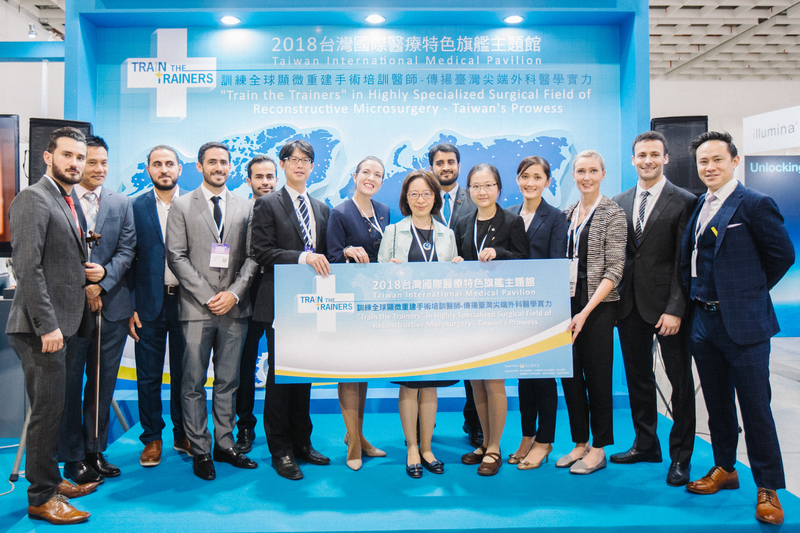
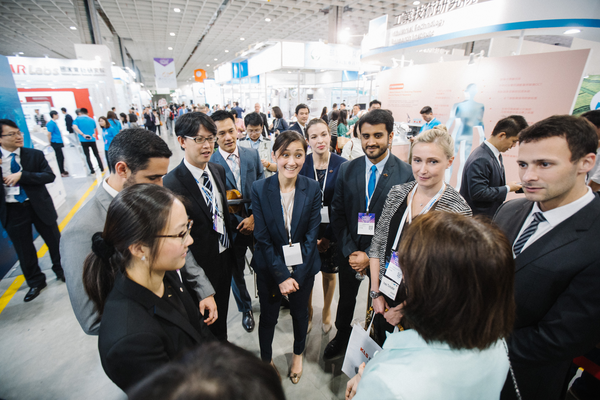
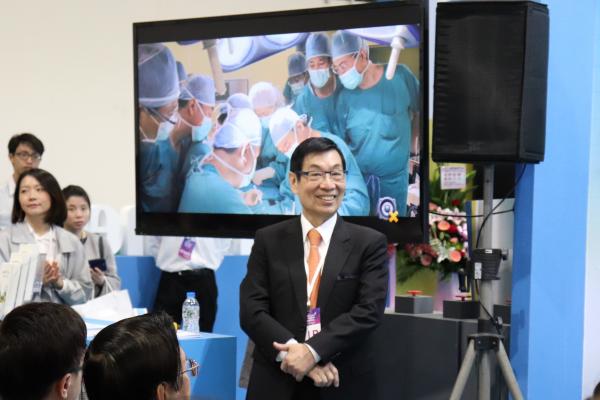
Train the Trainers” in Highly Specialized Surgical Field of Reconstructive Microsurgery
The goal of “train the trainee” is to train these physicians to use the knowledge and technology to serve patients. When the goal upgraded to “train the trainers”, we emphasize the sense of mission and concept. In addition to teaching knowledge and technology for serving patients, these “trainers” can also train other students by delivering knowledge in their particular field, once they return to their own country.
-- Academician Wei, Fu-Chan
- Austria/ Chieh-Han John TZOU
Professor and Director of Plastic and Reconstructive Surgery/ Hospital of Divine Savior Vienna; Teaching Hospital of the Medical University of Vienna - Canada/ Christiaan Schrag
Clinical Assistant Professor/ Section of plastic Surgery, University of Calgary - Canada/ Amélie Bourget
Chief of Plastic Surgery Assiatant Clinical Professor/ Charles LeMoyne Hospital affiliated to Sherbrooke University - Dominica/ Victor Garrido
Hepato-Pancreato-Billiary and Transplantation Surgeon - Italy/ Marco Pappalardo
Plastic Surgeon at Plastic and Reconstructive Surgery, Department of Surgival, Oncological and Oral Sciences, University of Palermo
PhDst Doctoral Course of Oncology and Experimental Surgery, University of Palermo - Singapore/ Bien-Keen Tan
Prof and Head of Plastic, Reconstructive and Aesthetic Surgery Department/ Singapore General Hospital - Sweden/ Andres Rodriguez
Chief and Associate Professor & Director International Fellowship Program in Reconstructive Microsurgery/ Department of Plastic and Maxillofacial Surgery Uppsala University Hospital - USA/ Roger K. Khouri
Founder of Miami Breast Center - UK/ Hywel Dafydd
Consultant Plastic, Hand and Peripheral Nerve Surgeon/ Welsh Centre for Burns & Plastic Surgery; Honorary senior Lecturer, Swansea University - UK/ Francesco Mattia Giovanni Riva
Associate Specialist in Head and Neck Reconstructive Surgery/ The Royal Marsden Hospital NHS Foundation Trust
This year's Expo put 5 major specialty medical capabilities of Taiwan in the spotlight:
- Reproductive medicine:
(1)Artificial reproduction。In 1996, Taiwan took the lead in the whole process of IVF in Asia, without the use PVP (polyvinylpyrrolidone) for microinjection surgery, successful conception was achieved in infertility women. For male infertility patients such as azoospermia, rare sperm or spinal injury, an electric stimulation probe is placed into the patient’s rectum, a technique known as “electoejaculation”. Around 0.3 ml of semen can be obtained per stimulation and can be used for artificial insemination 3 times.
(2)Prenatal genetic screening. Preimplantation genetic diagnosis (PGD) technology can target couples with a family history of genetic disease to block genetic disease early in pregnancy. Taiwan has successfully assisted AADC and Charcot-Marie-Tooth disease (CMT) patients to successfully produce healthy babies, not only becoming the world's first, but also reaching a new milestone in genetic medicine around the world. In 2008, the first Asian diagnosis of whole-global amplification by embryo implantation was completed. The embryo of non-thalassemia and homologous human leukocyte antigen (HLA) was correctly selected and successfully implanted, giving birth to a healthy baby girl. Meanwhile the cord blood was collected during delivery, and was subsequently used in treating her affected sibling . PGD technology enables genetic screening during the embryonic stage of development. By removing some cells for testing, and substituting embryos with normal chromosomes and without genetic diseases into the uterus, the technology has the opportunity ensure healthy babies, which can be used to treat thalassemia, hemophilia, muscular dystrophy, and congenital deafness. In addition, with the successful use of blastocyst stage embryos, the diagnostic rate can increase from 70% to 91%, with a pregnancy rate as high as 64%.
(3)Oocyte cryopreservation. The oocyte vitrification process in Taiwan has achieved a survival rate of more than 90%. The fertilization rate and embryo division rate are now comparable to those of fresh oocytes, leading to increased pregnancy rate. In addition, the vitrification technology has a faster thawing speed, which can reduce the occurrence of ice crystals in the thawing process and less cell damage. Nowadays, the patient can have multiple chances of pregnancy by just undergoing a single oocyte retrival surgery.
- Orthopaedic:
(1)Osteosarcoma. Many bone tumor centers around the world use liquid nitrogen cryopreservation to provide more precise adjuvant treatment for primary malignant bone tumors (such as osteosarcoma) to reduce the chance of tumor recurrence, but also suffer from up to 19% of complications. Taiwan has published three unique cryoablation technologies in the world: biological cryostats, cryosurgery normal tissue preservatives and FNEC treatment of tumor compositions, which can avoid complications such as bone nonunion, avoid cartilage frostbite, subsequent early onset arthritis and also improve the controllability of the procedure.
(2)The world's largest "bone bank". Taiwan has the largest single non-profit bone bank, with an average annual donation rate of more than 95%. The bone organization in the warehouse exceeds 500 pieces, the largest in the world! In order to avoid concurrent infection after transplantation, bone acquisition, preservation, and bone implantation are all done in the operating room. Any bone that enters the bone bank must be stored at minus 70 degrees Celsius for at least 6 weeks to avoid rejection after transplantation. At present, there are more than 500 cases of transplant surgery each year, and the infection rate is only 1.2%, which is the lowest in the world.
(3)Childhood traumatic radial head dislocation. Chronic pediatric radial head dislocation, which causes elbow joint deformity, affects joint mobility, and in the long term, leads to arthritis, pain and loss of function. In the past, various surgical treatments have been proposed but with poor results and many side effects. Taiwan’s experience in treating these patients by innovative surgical techniques have become an international standard. By performing open reduction of the radius, ulnar corrective osteotomy, and annular ligament reconstruction via the same surgical wound, the overall surgical success rate can be improved to over 90%.
(4)Kyphosis correction. In 1991, Chen Yinghe, the Dean of the Tzu Chi Orthopaedic Department performed the first case of kyphosis correction of ankylosing spondylitis. More than 170 cases have been performed so far, with a total of more than 220 cases in the Tzu Chi hospital. Dr.Chen pioneered the world’s first two-stage SPO and PSO osteotomy procedure, and is published in the eighth edition of Orthopedic Knowledge Update 8, 2008. Dr.Chen is also one of the authors of the chapter on ankylosing spondylitis in the 2009 American textbook "Pediatric Spinal Surgery" and is a well-known leader in this field.
- Transplantation:
(1)Liver Transplantation Center .In 1984, Professor Chao-Long Chen performed the first successful liver transplantation in Asia, paving the first legislation in Asia on organ donation from brain dead donors in 1987. As of July 31, 2018, the team performed 1,772 liver transplants, including 1,556 living donor liver transplants that rank among the highest survival rates in the world. Kaohsiung Chang Gung Memorial Hospital along with Kyoto University, Tokyo University, Ulsan University and University of Hong Kong comprise the 5 pioneering global leading centers in living donor liver transplantation.
(2)Pancreas transplantation. Pancreas transplantation is a difficult and complicated operation in the field of organ transplantation. It is a rare medical technique in Taiwan and even in Asia. Taipei Veterans General Hospital is not only the medical center in Asia capable of performing this operation, but also a pancreas transplantation in Taiwan, with the largest number of pancreas transplantation cases. Not only procedures such as the commonly seen pancreas transplant alone (PTA), Pancreas after kidney transplant (PAK) and Simutaneous pancreas and kidney transplant(SPK) transplantation are all performed, special procedures such as the world's only Pancreas Before Kidney Transplant (PBK) and Pancreas after liver transplant (PAL) are also available. The success rate of pancreas transplantation surgery was around 96.3%.
(3)Lung Transplantation. In 1995, the Lung Transplantation Team of National Taiwan University Hospital successfully completed the hospital’s first lung transplant operation. Currently the longest surviving lung transplant patient has been more than 20 years old. In 1999, the first cardiopulmonary transplant operation was completed, and Taiwan became recognized as a major center capable of performing lung transplantation, lobectomy, double lung transplantation, and cardiopulmonary transplantation. Nowadays, it has become futile to carry out bilateral lung transplantation under the traditional low-temperature cardiopulmonary bypass system. Complications related to large doses of anticoagulant use, such as post-operative thoracic bleeding has been reduced. Since the approval of the Ministry of Health and Welfare, Taiwan is going to initiate human clinical trials on living donor lobe transplantation, which may further enhance the field’s practice.
- Cardiovascular:
(1)Arrhythmia. In 1997, doctors in Taiwan made progress by discovering that non-pulmonary veins are one of the main causes of atrial fibrillation. They also pioneered a technique called “atrial fibrillation electrocautery”which consists of using the electrode tube with the same thickness as the pen tip, guided by the 3D stereotactic system, enters the blood vessel into the atrium, and removing the lesions that have abnormal depolarization. The results showed that patients could be free of recurrent atrial fibrillation for up to one year, with success rates around 85% to 90%, and short hospital stays, usually only taking 3 days.
(2)Cardiac catheterization. In 2002, Taiwan first expanded the blood vessels of the iliac artery catheterization treatment, and used the "radial artery" on the hand to send the catheter into the myocardial infarction embolization to reduce the chance of blood transfusion and blood transfusion. At the same time, the "coronary thrombus removal device" is used to extract the thrombus dropped by the interventional treatment to avoid embolization of the distal end of the blood vessel. The thrombus can be sucked out within 40 minutes, and the success rate of revascularization has improved to 95%. Major complication rate within 30 days was significantly reduced to 2.8%, and is top-ranked in the world.
(3)Minimally invasive surgery. In 2010, Taiwan completed the first "full endoscopic non-stop coronary artery bypass" performed by Da Vinci's robotic arm. The coronary artery stabilizer is attached to both sides of the blood vessel, so that the local blood vessel portion moves with the heartbeat, so that the physician can complete the blood vessel suture in the normal beating of the heart. Using only 3 to 4 small surgical ports at the front chest or under the arm, the surgical field’s 3D image can be obtained by endoscopy and surgical procedures can be performed in a very small space by the Da Vinci’s mechanical arm. Since the wound is small, the recovery is fast, The chance of postoperative infection is also greatly reduced.
- Otolaryngology:
Cochlear implant. Traditionally, due to large surgical wounds, postoperative swelling and other factors, the post-operative early electrical stimulation is not feasible, and patients have to wait for at least 4 weeks. However, innovative techiques known as "opening frequency within 24 hours after cochlear surgery" and "minimally invasive incision" were pioneered in Taiwan to solve the this problem. Through the new technology, post-operative evaluation can now be completed within 24 hours, with fine-tuning done on the third day and return to activity on the fourth day. The results have attracted many patients suffering from hearing loss to travel abroad to Taiwan for the procedure.
